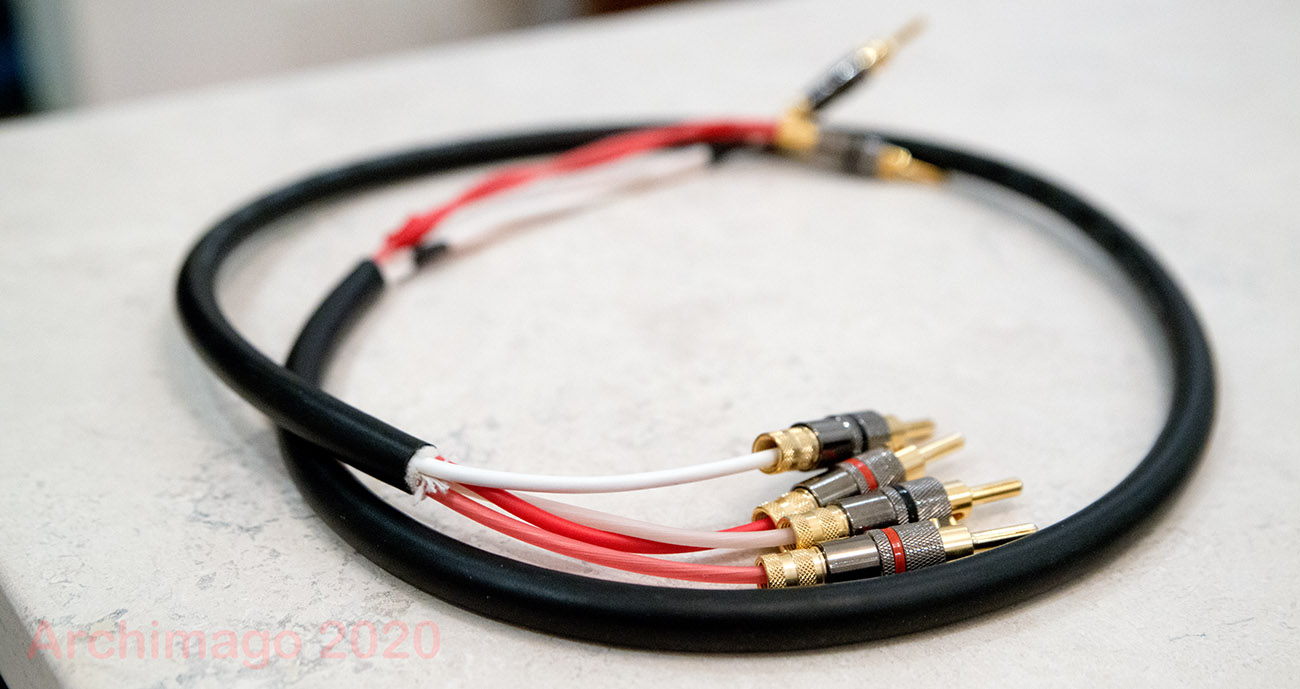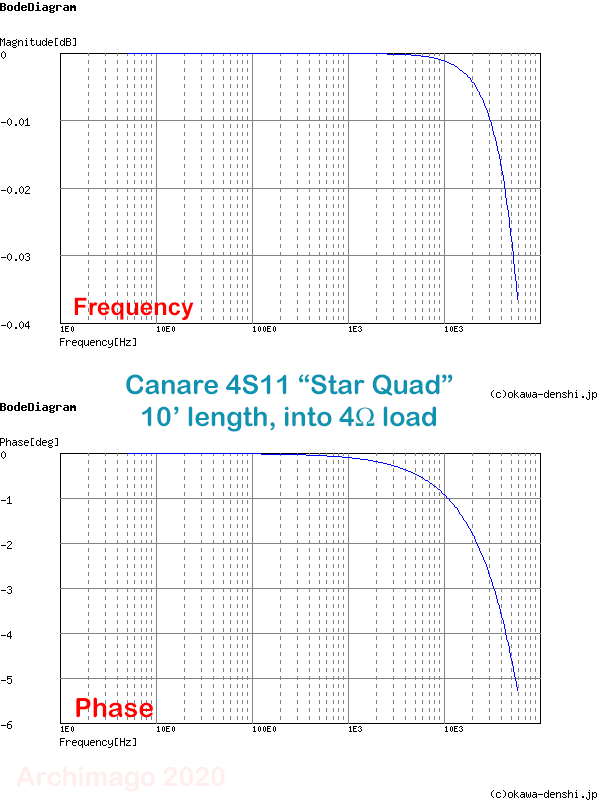MEASUREMENTS: NB Cables "The Vigilante", Raymond Cables, Canare 4S11, Slinkylinks Speaker Cables. (And related thoughts on audiophile "snake oil".)
http://archimago.blogspot.com/2020/04/measurements-nb-cables-vigilante.html
[
III. Canare 4S11 "Star Quad" DIY Speaker Cables
Insertion Loss (10' Canare 4S11 to 4Ω load) = -0.056dB
Excellent resistance results as one would expect from 11AWG cable, lower inductance than both
"The Vigilante" and Raymond Cables with marginally higher capacitance than both as one might expect from the
"star quad" twisting. For 10' length, using inductance of 1.01μH, capacitance 294.5pF:
Into 4Ω load, the 20kHz roll-off would be a mere -0.0041dB or so with -
1.75° phase shift thanks to that low inductance value.
Remember that the
"star quad" configuration can be good to reduce EMI emission from these cables; great to reduce interference if you're running low-voltage wires like interconnects, phono, or microphone lines nearby. The downside to this cable to be honest is that it's not particularly pretty with that satin black
(or gray) plastic outer sheath :-|. Certain
"Golden Ear" Audiophile friends might not be particularly impressed even though it'll sound as good as any other high quality speaker cable regardless of price. ]
Related,
Star quad, the best geometry to build audio and power cables by maty
https://www.audiocircle.com/index.php?topic=156793.0


